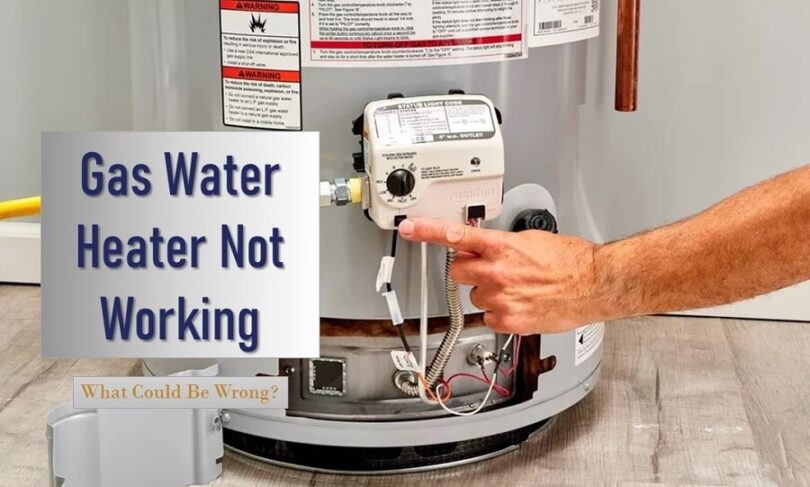Introduction
A soothing hot shower, a cornerstone of a refreshing morning or a relaxing night’s sleep, becomes an unexpected challenge when your water heater fails to deliver. To unravel the mystery behind a water heater malfunction, we delved into potential issues and their solutions. In this article we will be explaining troubleshooting gas water heater issues.
Troubleshooting Gas Water Heater for No Hot Water:
When a gas water heater fails to produce hot water, various culprits may be at play. Here are common issues and their potential solutions:
1. Deposits on the Tank’s Bottom:
Sediment accumulation near the burner can act as insulation, hindering water heating. The remedy involves flushing out sediment from the tank’s bottom, restoring proper functionality.
2. Indicator Lamp Turned Off:
If the pilot light is off and attempts to relight it fail, potential issues include low gas pressure, a closed gas valve, air in the gas line, or damaged thermocouples. Addressing these concerns with professional assistance resolves the problem.
3. Flickering Burner:
A burner that flickers or fails to provide consistent heat may suffer from dust accumulation or a faulty thermocouple. Regular cleaning and, if necessary, thermocouple replacement remedy this issue.
4. Broken Dip Tube:
A malfunctioning dip tube directing cold water to the tank’s bottom results in the direct entry of cold water, leading to lukewarm or cold water output. Replacing the dip tube resolves this problem.
Why Does Cold Water Work But Not Hot Water?
Understanding why hot water eludes you involves considering a few common scenarios:
1. Deposits Near the Burner:
Dirt and minerals collecting near the burner can insulate the water, preventing effective heating. Flushing the sediment resolves this issue.
2. Pilot Light Turned Off:
If the pilot light fails to ignite, potential causes include low gas pressure, a closed gas valve, air in the gas line, or damaged thermocouples. Professional intervention is necessary to address these issues.
3. Indicator Light Illuminated but Stationary:
A faulty thermocouple or gas valve near the pilot light may cause this scenario, requiring replacement of the damaged parts.
4. Flickering or Inconsistent Burner:
Accumulated dust in the burner or a faulty thermocouple may lead to inconsistent heating. Regular cleaning and thermocouple replacement can rectify this problem.
5. Faulty Dip Tube:
When the dip tube fails to direct cold water effectively, a mixture of cold and hot water is delivered, resulting in lukewarm or cold water output. Replacing the dip tube resolves this issue.
Why Is the Hot Water Too Hot?
Occasionally, water heaters present the opposite problem—water that’s excessively hot. This can be attributed to a malfunctioning temperature switch or safety valve. Adjusting the temperature control setting or replacing faulty components resolves this issue.
What Causes Cloudy or Dirty Water?
Water discoloration, with or without sediment, can result from rust within the tank, anode rod corrosion, or pipe-related issues. Flushing out accumulated sediment, addressing corrosion, and cleaning the tank can remedy these concerns.
Why Does My Water Smell Bad?
The growth of amoebas, bacteria, and fungi within water tanks and pipes can lead to unpleasant odors. Raising the temperature to 130-140 degrees Fahrenheit or cleaning the tank with bleach helps eliminate these contaminants. Additionally, a replaceable anode rod may contribute to unpleasant odors and should be inspected and replaced if necessary.
Why Does the Heater Smell Like Rotten Eggs?
A distinct smell of rotten eggs indicates a potential gas or methane leak, posing both safety and environmental hazards. Immediate action, including ventilation by opening windows, pilot light relighting, and professional assistance, is crucial to address this issue and prevent potential explosions.
Water Heater Making Sizzling Noises:
Sizzling noises may indicate a faulty valve causing leakage from the top or deposit buildup and corrosion at the tank’s bottom. Tightening or replacing loose valves and addressing corrosion issues may resolve these concerns.
How to Reset a Gas Water Heater:
For most gas water heaters, resetting involves the pilot light. Follow these steps:
1. Wait 5 minutes after turning off the pilot light.
2. Reduce the temperature and align the pilot dial with the pilot.
3. Hold down the button until it clicks.
4. Hold the ignition button until the pilot ignites.
5. Release the pilot control when the light turns on.
6. Switch on the pilot light.
7. Set the desired temperature.
Newer models may feature a thermal reset switch, typically labeled “Reset” on the thermostat. Press the red reset button to restart the heater.
Conclusion (Troubleshooting Gas Water Heater)
In conclusion, understanding and troubleshooting gas water heater issues requires a systematic approach. Regular maintenance, prompt addressing of minor concerns, and professional intervention for major repairs contribute to the heater’s longevity and cost savings. Keeping your water heater in optimal condition ensures consistent performance and a reliable supply of hot water.
Disclosure: We may get commissions for purchases made through links in this post.








